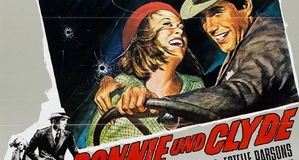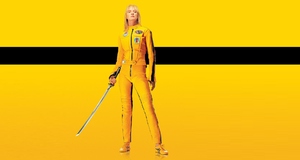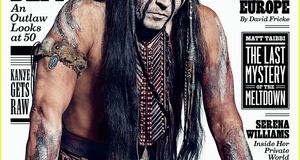The Breakdown of Censorship in American Cinema
By
2010, Vol. 2 No. 03 | pg. 1/1 In America, the years from 1946 to 1962, labeled the “post classical era” of cinema, were years in a state of transition. American culture was simply unstoppable and alive, constantly changing and growing toward a more open society. However, though there was a shift in American values toward openness in addressing sexuality and violence as well as other societal issues, it was in direct conflict with the conservative government currently in power. This conflict of ideals resulted in a caustic, explosive period of heightened awareness of violence, sexuality, social problems, and individuality. This era witnessed the beginning of the breaking apart of censorship within movies as they shifted toward more frank portrayals of realism. The once forbidden issues of sex and realistic violence slowly emerged onto the silver screen as films addressed the topical and controversial more often. This break down of censorship began as a result of images of World War II and black consciousness seen on television, the new mass media. It liberated movies from some censorship as the focus of the masses shifted. These extracinematic factors coupled with cinematic factors, such as movies competing with television, the rise of independent producers, the high percentage of adaptations, and the influx of foreign films, all helped to slowly break down the wall of censorship that surrounded American cinema. Though the barricades of censorship were bombarded from 1946 to 1962, they did not collapse until the period of years known as the “modernist” period. This period witnessed the explosion of censorship. Violence on television from World War II, the Civil Rights Movement, and Vietnam on television opened the viewers’ eyes to the harsh reality of the world. It desensitized them and paved the road for the portrayal of realistic and increased violence in films. The gates of sexuality were also opened with Playboy flooding the markets and many homes and the Kinsey Reports and the Hippie movement exposing the sexuality of the American Male and Female. The rebirth of the Legion of Decency and the replacement of the production seal with the ratings system were also extracinematic factors that assisted this explosion. In terms of cinematic factors, the movie industry began to accept the lack of seal and a bad Legion of Decency rating. In addition, films were now being made for both the American and foreign market since over fifty percent of the box office profits now came from over seas. With foreign films often encompassing more sexuality and violence than American films, the American movie industry needed to heighten the two elements in its own films in order to compete. These extracinematic and cinematic factors all allowed for an increased portrayal of sexuality and violence within American films. This dramatic change within American cinema in terms of censorship and the increase of portrayals of sex and violence are exemplified in the “modernist” films The Last Picture Show, Sunday, Bloody Sunday, and The Exorcist. The Last Picture Show (1971), a film about the decline of cinema, America, small town life, and traditional values, personifies the end of censorship in the “modernist period.” The film, a male melodrama, is self-reflexive in it’s nature and presentation, filled with nostalgia and sentiments of traditional values and morals, but breaking away from them and containing sobering realism in terms of sexuality and violence. This invocation of nostalgia is seen in terms of illusions. The film explores these illusions with numbing tones of realism, refusing to sugar coat the pill for the audience and realistically portraying situations involving sex, death, molestation, nudity, and adultery. It deconstructs the myths surrounding these issues and opens the closet, allowing the so-called “forbidden” to be paraded in front of the audiences’ eyes.Within the film, sexuality is explored and examined within several relationships. These relationships cover a variety of ages and often the ages are intermingled. Frank nudity appears in several scenes, something that films of prior years never would have done or been able to do. It portrays the forbidden, private nature of sexual relationships that was often dealt with in past films with a soft, gentle fade or pan. Within this film, however, each scene involving has the human touch of awkwardness as well as openness. There are no gentle fades or pans to the window to reveal the outside sky. The camera remains focused on the couples even as their clothes are removed. For example, when Sonny (Timothy Bottoms) is making out with his girlfriend in his car, she removes her shirt and bra, leaving her completely topless. This frank nudity is an element films of the “classical” and “post-classical” periods would have been condemned and attacked for. However, in the “modernist period,” the deconstruction of censorship allows this frank portrayal to slip easily through the censors without any problem. Adultery is also a subject dealt with through the characters Sonny and Ruth (Cloris Leachman), Sonny’s gym teacher’s wife. They are seen engaged in sexual intercourse as well as kissing in several different scenes. When one examines films of the “post-classical” period, adultery was dealt with, but the characters were never really shown engaged in some sexual act. For example, in Executive Suite, one of the executives is having an affair, but the subject is dealt with subtly, and he is never even shown kissing her. In The Last Picture Show, however, the subject of adultery is not only dealt with, but explored deeply and intimately as it exists in the real world. Another sexual idea that is dealt with is molestation. Molestation is a topic that was definitely not addressed in previous years of cinema and that is still only lightly dealt with today. However, with the breakdown of censorship, the film is able to deal with the issue and its existence within society. This openness toward sexuality relates directly to the growing openness of America with its own sexuality at the time. With Playboy in high circulation and the hippie lifestyle at its peak, sexuality and sensuality were brought into the limelight of the American public for the first time. Topics that were once kept behind closed doors in America were now out in the open. Society was confronted with its own sexuality and issues that were once only confined to private bedrooms. Now, with nudity accessible at any corner drug store and television increasingly dealing with sexual situations, movies were able to explore all the facets of sexuality to their depths. Realistic violence also appears several times within The Last Picture Show. Fights are no longer bloodless with each character emerging with a mere bruised lip. For example, when Sonny and Duane fight over Jacy, Duane smashes Sonny in the face and causes one entire side of his face to become bloody. Though the film is black and white, the audience can clearly discern the bloody running down his cheek and blanketing over his eye. The violence is both graphic and real. Later, the comical patch Sonny wears over his eye conveys the realism of violence as well as the concept of consequence to the audience. Where past films would have the hero emerge unscathed, The Last Picture Show portrays violence and it’s aftermath with a gritty, human touch. This relates directly to the climate that existed within America at the time. With the realism of the violence of Vietnam and the Civil Rights movement on television as well as football as America’s growing pastime, the American people were no longer innocent of the idea of violence and bloodshed. The idea of violence in the real world became more and more prevalent within American life as television desensitized people to it. Therefore, censors were no longer able to prevent the movies from portraying what Americans could now see on the nightly news or out on their own streets. As a result, movies accommodated themselves to the times and brought the audiences what they began to crave more and more of: realistic violence. A major formal element of The Last Picture Show that adds to the dismantling of censorship is the voyeuristic style of filming utilized to convey the story. A type of documentary realism, this voyeuristic style allows the audience to witness the most intimate moments of each of the characters. The audience finds itself in the bedroom during several sexual encounters, including ones between Sonny and Ruth as well as Duane (Jeff Bridges) and Jacy’s (Cybill Shepherd) first sexual encounter. This style of filmmaking almost seems to pry into the private lives of the characters and expose them at their weakest and most vulnerable moments. In addition, when Jacy strips at the pool party, the camera is focused directly on her from the other characters’ point of view. This allows the audience to feel as if she is stripping for them and directly in front of them. Voyeurism is a major undercurrent within the film and a formal quality utilized in the filming of the movie in order to convey the sexuality on a more human level. Sunday, Bloody Sunday (1971), a romance melodrama from auteur director John Schlesinger, also depicts the explosion of censorship during the “modernist period.” The film tears apart the typical clichéd myth of the classical romantic love story and immerses the audience in the middle of a love triangle between a woman and two men. This romance melodrama encompasses a new European type of realism within it known as the style of expressive stylization. This style uses a new narrative, usually with an episodic, sometimes disruptive plot, and explores the state of soul within each of the characters, placing the role of fate and chance in the foreground. It came about as a result of Truffaut’s essay on the European movement and policy of authors that discussed movies as an artform and directors as the artists who should be able to say whatever they want. This new style of modernism brought from Europe to Hollywood affected American films greatly with many American filmmakers attempting “to do as the Europeans do.” This was done as both an issue of style as well as an issue of competition in order to match the new levels of profanity, sexual boldness, and violence found within European films. Sexuality is at the foreground of the story of Sunday, Bloody Sunday and is examined at a heterosexual, homosexual, and bisexual level. With sexual boldness as one of the major thematic aspects of “modernist” European films, the film is no different taking the audience into the bedroom once again to view the characters during their most intimate moments. The three title characters, Dr. Daniel Hirsh (Peter Finch), Alex (Glenda Jackson), and Bob (Murray Head), are all seen engaged in some type of sexual act at one point with Glenda Jackson appearing topless on several occasions. The portrayal of blatant homosexuality is also an aspect of the film that sets it apart from films of the “post-classical” period. For example, in Cat on a Hot Tin Roof, those behind the film would rather eliminate the issue of homosexuality from the story than adapt it true to its original form. Many were still, and are still, uncomfortable with the idea of homosexuality in society, but with the ending of censorship, this aspect of sexuality could now be portrayed. This sexual boldness is typical of the explosion of censorship during the “modernist period.” The erogenous nature of the characters surpasses their own sensual natures as there is a lack of connection between the each of the relationships on an actual loving level. Sexual attraction and desire appear to encompass the characters as both Finch and Jackson’s characters say at one point that they have no idea why they care for or want Bob. As in The Last Picture Show, this relates to the sexually bold nature of society during the 60s and 70s. The two decades represented periods of sexual experimentation as well as sexual deviance with a lack of meaning behind the coupling of partners. This is seen through two sexual encounters held by the characters, one by Jackson’s and one by Finch’s. While still “together” with Bob, Jackson’s character sleeps with a random client. There is no meaning behind this pairing other than sex. In another instance, Finch’s character runs into a young male on the street that he had had sexual relations with but wishes to have nothing to do with. Here, the sexual experimentation is exposed and also torn apart as not so much adventurous and wild, but pointless and unfulfilling. Sunday, Bloody Sunday exposes this bold sexuality of the society of the time and presents it to the audience in its true, real nature. Violence and other elements usually hidden from the audience by censors are also found within the film, but are downplayed compared to the sexuality. The most brutally violent part of the film occurs when the Hodson’s family pet is hit by a truck. This harsh, violent scene affects the audience deeply, not only because of its violence, but because one of the little girls of the Hodson family was also almost killed. This endangerment of a child as well as the killing of an animal are both real occurrences in everyday life, but occurrences that censors tended to cut from previous films. Another element not usually found in previous “classical” and “post-classical” films is drug use. With the explosion of censorship, films could now portray the rampant drug use amongst teenagers and throughout the hippie culture within society. Though downplayed in the film, it appears in several scenes, most notably with the very young Hodson children blatantly smoking a joint, and brings forth the issue of drug use and abuse to the audience, both issues that were rarely addressed previously. However, with the explosion of censorship, these issues of violence and drugs could now be portrayed to the audience in their actuality. A formal aspect of the film that assists the explosion of censorship is the documentary style of filmmaking utilized to present it. Documentary realism, a style of filmmaking born out of the documentary films of World War II, was also very prevalent during this period with many documentary trained filmmakers emerging from Vietnam. Schlesinger, one such filmmaker who came from documentaries, shows this style’s influence in his own work as he takes the camera into the bedroom and refuses to cutaway from nudity, intimate moments, profanity, or striking realism in terms of violence and drug use. Similar to the documentary/voyeuristic style of The Last Picture Show, Sunday, Bloody Sunday shows a clear influence of documentary realism as well as the new European style of expressive stylization. Both of these realistic formal methods of presentation assist the break down of censorship within the film. A third film that portrays the collapse of censorship during the “modernist” period is The Exorcist (1973), a topical accommodation of the horror film by director William Friedkin. The film topically accommodates the horror genre to create a new type of horror film known as the occult/demonic horror film. This genre typically deals with psychological realism in terms of man’s psyche when dealing with the supernatural. In The Exorcist, the psychological realism is brought forth in terms of Father Karras’ (Jason Miller) personal battle between science and faith and Chris MacNeil’s (Ellen Burstyn) psychological battle with the idea of losing her daughter. Again, documentary realism is present in this film as well along with exploitational cinematic realism as the camera not only takes the audience into the intimate struggle of a family, but exposes them to a surrealistic battle with the unknown. Though a film that deals with the surreal and supernatural, The Exorcist involves horrifying, often disgusting elements of reality, including vomiting, masturbation, death, and other outrageous forms of violence that make it the biggest break from censorship of the three films mentioned. No matter how outrageous the violence appears at times it has an undercurrent of reality within it as the audience watches a young girl being slowly killed by the devil, which relates to disease or some other unknown factor in real life. The audience relates to and is terrified by the film because every person imagines someone in their life like Regan (Linda Blair) that could possibly by ravaged by some unknown element. The violence present in the film is overwhelming. For example, at perhaps its pinnacle, Regan uses a cross with Jesus on it to masturbate and stab herself. The mix of sexuality and violence in this scene is absolutely disgusting and horrifying. The implications of masturbation with a cross are also extremely sacrilegious. In another scene, Regan’s head turns 360 degrees around on her body accompanied by a horrible cracking sound. In two other scenes, she spews vomits onto Father Karras and forces her mother into her unexposed private region. These scenes of outrageous violence and gore have complete disregard for the censors and are unprecedented in their nature. The profanity present in the film is also unprecedented. Once possessed, twelve year old Regan has several scenes in which she speaks strings of obscenities. Some of her memorable lines include, “Your mother sucks -ocks in Hell, Karras!” and “Let Jesus -uck you, let Jesus -uck you! Let him -uck you!” Films of the “classical” and “post-classical” period rarely, if ever, used profanity. If the films did use profanity, the producers and studio were afraid it would be condemned by the Legion of Decency and would not receive a production seal. For example, The Legion of Decency condemned Guys and Dolls for the use of the phrase, “What the hell?” and a drunken scene. Often times when the Legion of Decency had a particular problem with a film or the threat of not receiving a seal existed, the studio would edit out the problematic parts and resubmit it. During the “modernist” period, however, films were able to escape this similar fate as censorship collapsed around them. Though the extracinematic factors of violence from images of WWII, the Civil Rights movement, and Vietnam seen on television helped pave the road for the violence and gore found in The Exorcist, it is the boldness of the movie studios that played the most intricate role in allowing this film to practically destroy censorship. The most important cinematic factor that helped break the control of censorship during the “modernist” period was the fact that the industry began to except the lack of a seal and a bad rating from the Legion of Decency. Where a lack of seal and a condemned rating by the Legion of Decency stopped a film from being released or caused it to be heavily edited in the “classical” and “post-classical” periods, studios no longer cared about either in the “modernist” period and simply released the film under a different company name. Sometimes they even used the so-called bad publicity to hype the particular film. This disregard for a lack of a seal and the Legion of Decency was the not the only reason censorship was brought to its knees. The motion picture industry no longer wanted the federal government to have control. Therefore, it hired President Johnson’s friend Jack Valente to be the President of the Motion Picture Association. He then announced a new code, which was extremely general compared to the old code and therefore allowed many films such as Bonnie and Clyde (1967), The Graduate (1967), and The Wild Bunch (1968) to emerge with new levels of violence and sexuality. When the code was deemed inadequate, it was replaced on November 1, 1968 by a rating system. This rating system no longer prevented films from reaching the general public based on their content, but rather gave them a rating to warn patrons of the movie houses of what they were walking into. As a result, films as bold with violence, profanity, and sexuality as The Exorcist were able to surpass the censors and be released to the general public. The period of years from 1963 to 1977 represent an era of transition and change within cinema. It describes the path of American cinema toward a more liberal, human, and realistic medium. This path was built upon the foundation of changes within society at the time. The images brought to every American home by the television of World War II, the Civil Rights movement, Vietnam, and football desensitized a generation toward the violence of the world, while Playboy and the hippie movement introduced America to its own sexuality. Cinematic factors including the revision of the production seal to a ratings system, the defiance of the movie industry toward the Legion of Decency and the Production board, the influence of documentary and voyeuristic filmmaking, and the influence of European filmmaking also helped contribute to the end of censorship. As seen by the influences during the “modernist” period above, films not only shape culture, but are shaped by culture. In conclusion, levels of sexuality, violence, and profanity found within The Last Picture Show, Sunday, Bloody Sunday, and The Exorcist personify the explosion of censorship in the “modernist” period of filmmaking from 1962 to 1977. This explosion was a result of several extracinematic and cinematic factors, which resulted in one of American cinema’s greatest periods of change. The question is still debated, however, whether this change was for the better or the worse. Suggested Reading from Inquiries Journal
Inquiries Journal provides undergraduate and graduate students around the world a platform for the wide dissemination of academic work over a range of core disciplines. Representing the work of students from hundreds of institutions around the globe, Inquiries Journal's large database of academic articles is completely free. Learn more | Blog | Submit Latest in Film & Media |


















